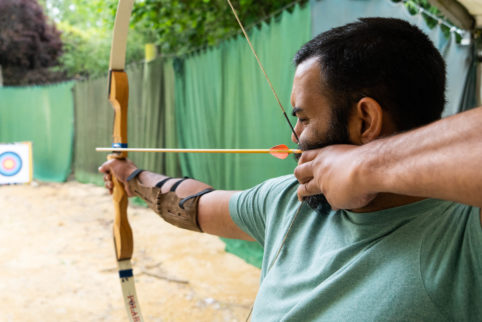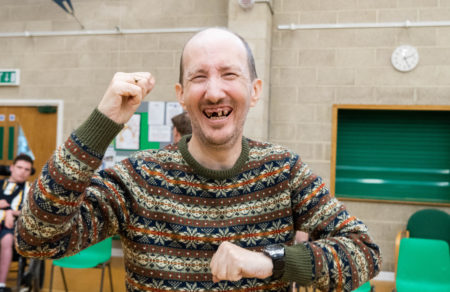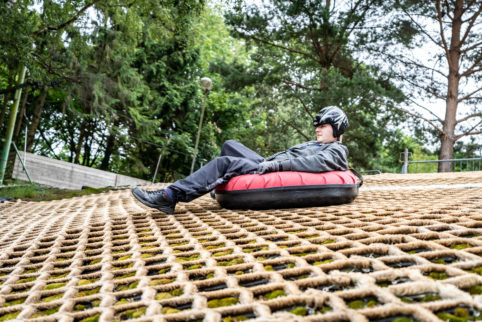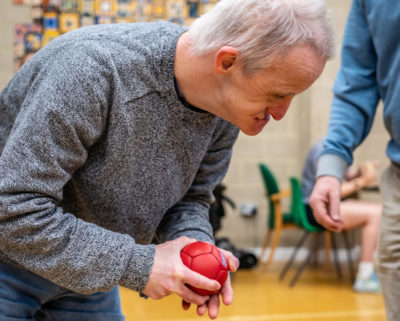I am disabled
In 2018, 13.3 million people reported being disabled [1]. The most reported impairments are those that affect mobility, lifting or carrying, so it’s understandable that disabled people are twice as likely to be physically inactive than non-disabled people.
Lots of people often find barriers to being active such as transport, cost and equipment, but we believe we can help you get active.
Where do we begin? Exercise can help improve stamina and muscle strength and makes your brain release endorphins, which makes you feel good.
Getting active also builds confidence, and helps improve your general mobility. Sounds good, right?


Exercise can help make you form new habits, and inclusive activity programmes may help you overcome the barriers you face.
There are a lot of people out there who can help you out; family members or clients you support who can help you find an activity you enjoy. This can lead to making new friends, trying new things and leading a healthy lifestyle.
Living with a disability is not a barrier to leading an active lifestyle. We build inclusive activities into our venues, so make sure to check us out. Be proud of your achievements and know that people with disabilities are capable of exercising! If some inspiration is needed, head over to BBC Sport Get Inspired.
Two disabled people rarely have the same needs, so it’s important that you find out what’s good for you personally. For example, wheelchair users may find their strengths in cardio and muscle-strengthening. Cardio comes in the form of swimming, using a wheelchair adapted rowing machine, wheelchair sprinting or wheelchair sports.
For most, people just want to enjoy that they are doing, so finding local open days and taster sessions will really help. Have a look and see what we offer in Southampton.
If you’re able to walk, try joining your local Disabled Ramblers group, to get out of the house and see some beautiful scenery.

Remember you don’t have to get sweaty to get active. Time spent at a park or giving donutting a go all contributes towards the 150 minutes of activity recommended a week.
Exercise doesn’t have to be done exclusively at the gym! Activities change with the seasons, so in the summer head down to your local tennis club, or in the winter you could give Boccia a go.
Many gyms offer pool-therapy classes with access for wheelchair users, or if you have more mobility in your legs, you could try water-aerobics.

The award winning ActiveAbility Solent programme is all about making sports and activity accessible to disabled people throughout the Solent region – no matter what your impairment, you can get involved.
ActiveAbility Adult Community Sessions, provide affordable and accessible community-based sport, exercise classes and activities. Participants can enjoy activities, meet new friends and learn new skills, regardless of transportation, financial, geographical or ability barriers.
Peter Hull MBE was born without legs or forearms but has not let anything stop him from excelling in sport.
